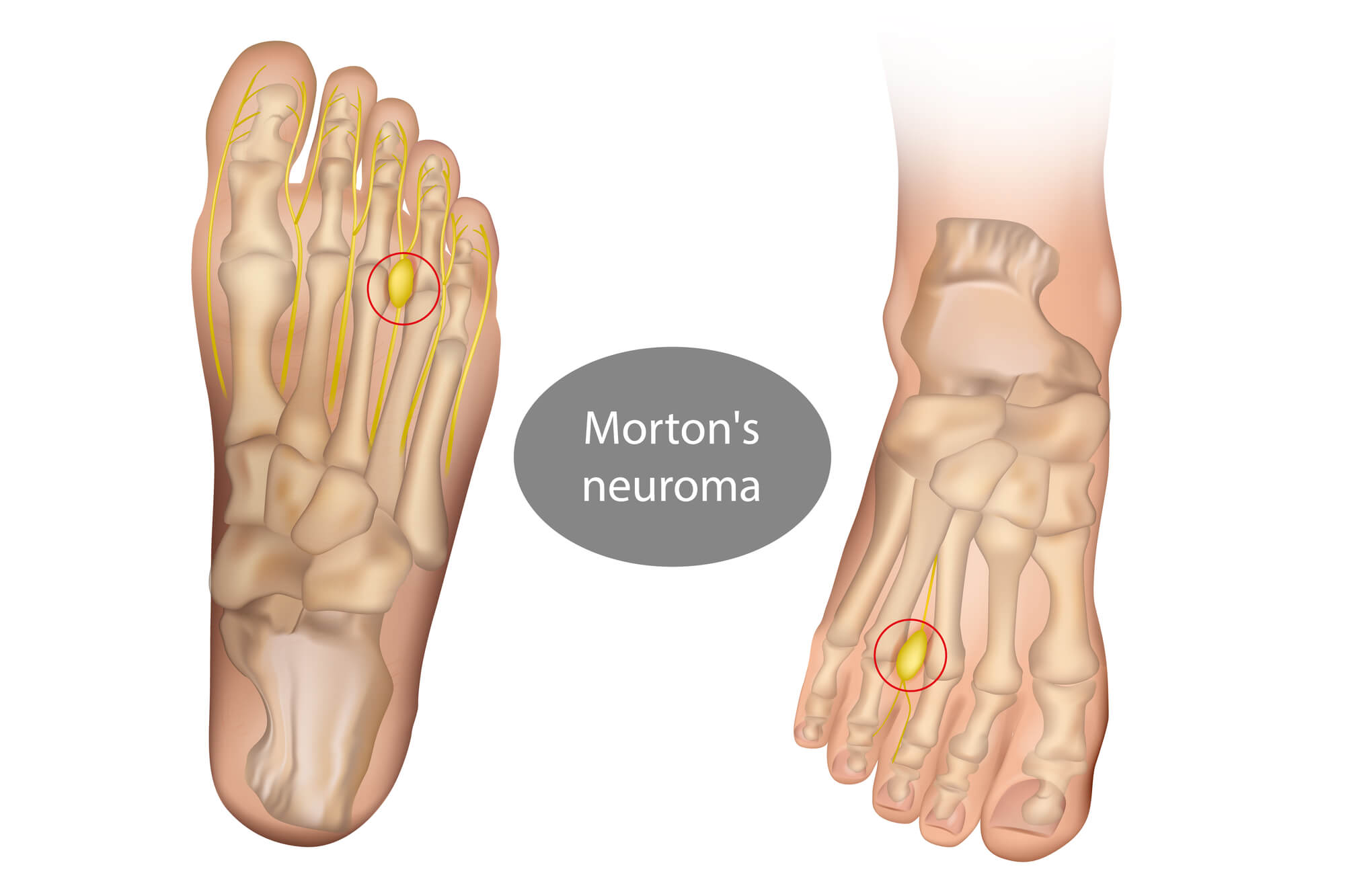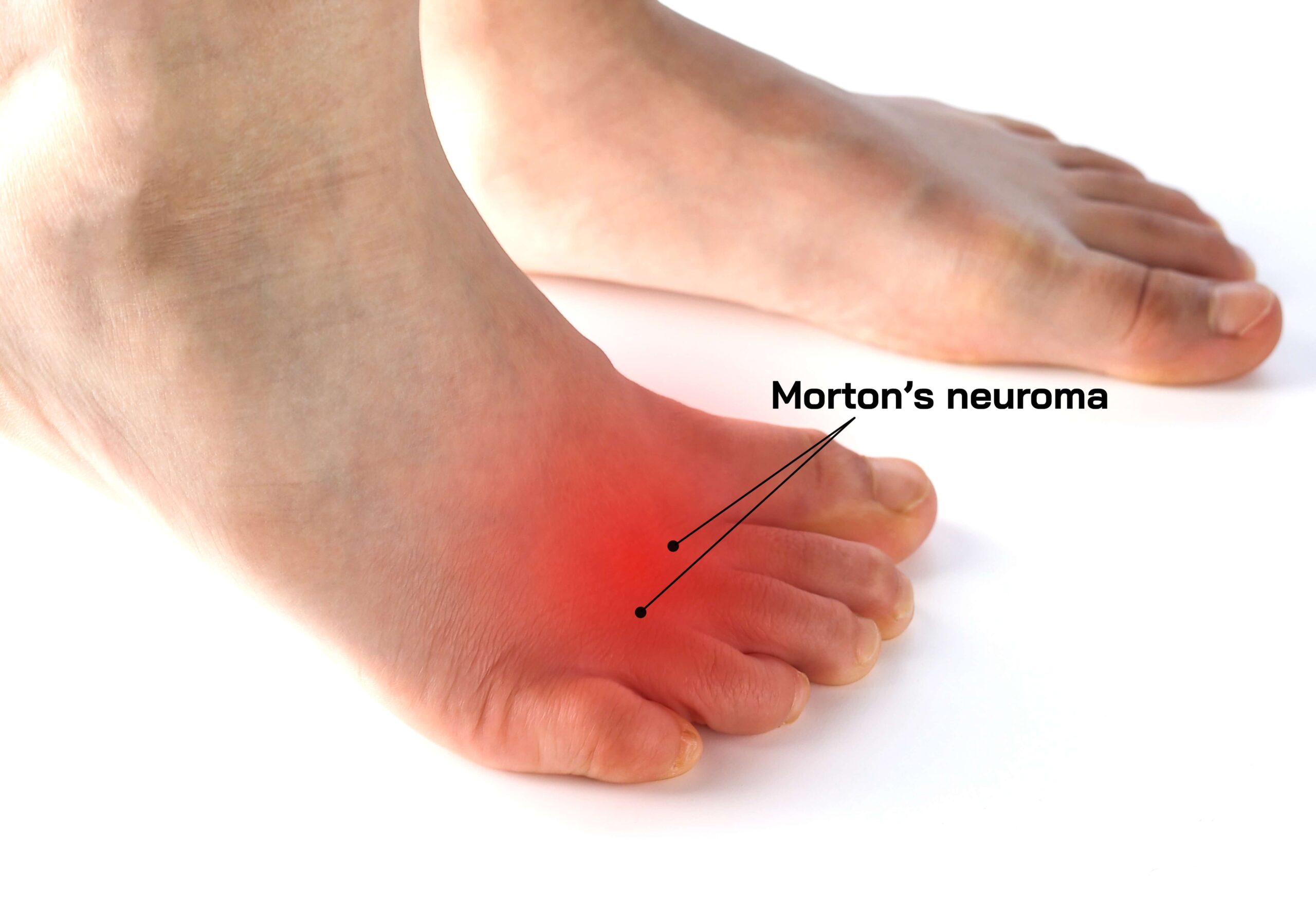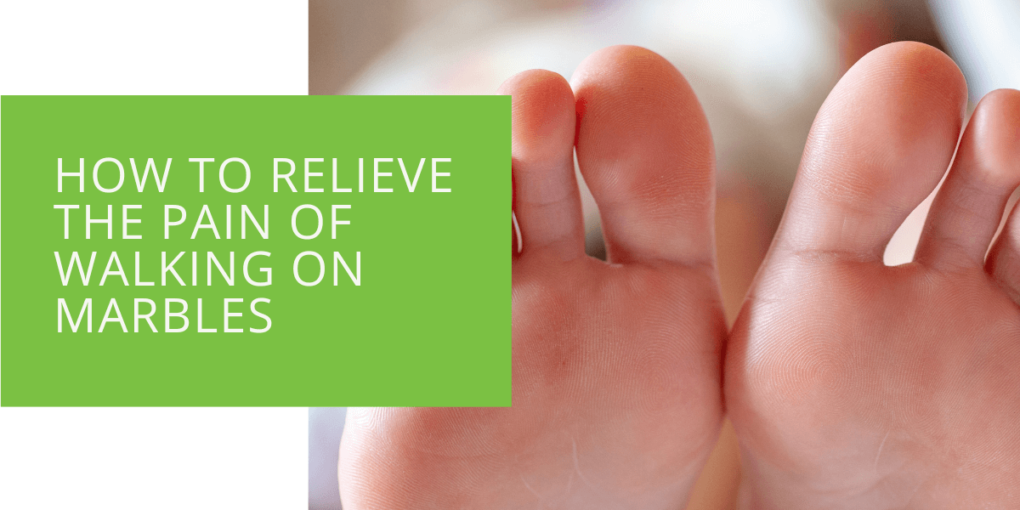How to Relieve the Pain of Walking on Marbles: Neuroma Treatment
Have you ever felt like you're walking on marbles or have a pebble stuck in your shoe, even when you're barefoot or wearing comfortable shoes? This sensation can be a sign of a foot condition called neuroma, a benign (non-cancerous) growth of nerve tissue that can cause pain and discomfort in the ball of your foot. If you're experiencing foot pain and think you may have neuroma, it's important to consult a podiatrist or other foot specialist to get an accurate diagnosis and discuss treatment options.
What is Neuroma and What Causes It?
Neuroma, also known as Morton's neuroma, is a condition that occurs when there is irritation or pressure on a nerve in the foot, usually between the third and fourth toes. It often feels like a lump or a pebble stuck in the ball of the foot and can cause burning pain or numbness in the toes.
Several risk factors can increase the likelihood of developing neuroma. Wearing tight or high-heeled shoes that put pressure on the ball of the foot can contribute to the development of neuroma, as can having high arches or flat feet. Repetitive trauma to the foot, such as from sports or physical activity, can also be a factor.

Symptoms of Neuroma
The most common symptom of neuroma is pain in the ball of the foot, which can range from a mild ache to a sharp, shooting pain. The pain may be worse when you're standing, walking, or running, and may be relieved by resting or removing your shoes. In addition to pain, you may also experience tingling or numbness in the toes, and a feeling like you're walking on marbles or a pebble stuck in your shoe.
Diagnosing Neuroma
If you're experiencing foot pain and think you may have neuroma, it's important to see a podiatrist or other foot specialist for an accurate diagnosis. During a physical exam, your doctor will examine your foot and feel for any lumps or abnormalities. They may also ask you about your symptoms and any activities or shoes contributing to your foot pain.
In addition to a physical exam, your doctor may also order imaging tests such as an MRI or ultrasound to better look at the structures in your foot and confirm the diagnosis of neuroma.

Treatment Options for Neuroma
There is a range of treatment options available for neuroma, depending on the severity of your symptoms and the underlying cause of your foot pain.
Non-Surgical Treatments
For mild to moderate cases of neuroma, non-surgical treatments may be effective in relieving pain and discomfort. These may include:
- Resting the foot and avoiding activities that put pressure on the ball of the foot
- Wearing shoes with a wider toe box to reduce pressure on the toes
- Using over-the-counter or prescription pain medication to manage pain
- Using ice or cold packs to reduce inflammation and swelling
- Receiving an injection of corticosteroids to reduce inflammation
- Using custom orthotics or shoe inserts to reduce pressure on the ball of the foot
Surgical Treatments
If non-surgical treatments are not effective in relieving your symptoms, or if you have a severe case of neuroma, your doctor may recommend surgical treatment. Surgical options for neuroma include:
- Removing the neuroma or the affected nerve tissue
- releasing the ligament that surrounds the nerve to reduce pressure on the nerve
- Removing any other structures that are causing irritation or pressure on the nerve, such as bone spurs or other abnormalities
The type of surgical procedure best for you depends on your circumstances and your foot condition. Your doctor will discuss each option's pros and cons and help you decide which treatment is right for you.

Preventing Neuroma
While it's not always possible to prevent neuroma, there are a few steps you can take to reduce your risk of developing this foot condition:
- Wear shoes that fit properly and have a wide toe box to reduce pressure on the toes
- Avoid wearing high heels or tight shoes that put pressure on the ball of the foot
- Maintain a healthy weight to reduce stress on the feet
- Stretch and exercise your feet regularly to maintain flexibility and strength
- Use custom orthotics or metatarsal pads to provide additional support and cushioning for the ball of the foot
Conclusion
If you're experiencing pain in the ball of your foot that feels like you're walking on marbles, it's important to see a podiatrist or other foot specialist to determine the cause and discuss treatment options. Neuroma is a common foot condition that can be treated with various non-surgical and surgical options, depending on the severity of your symptoms. By preventing neuroma and wearing proper footwear, you can reduce your risk of developing this condition and keep your feet healthy and pain-free.
FAQ
What can I do to ease the pain of Morton's neuroma?
There are a few things you can try to ease the pain of Morton's neuroma:
- Rest your foot and avoid activities that put pressure on the ball of the foot
- Wear shoes with a wider toe box to reduce pressure on the toes
- Use over-the-counter or prescription pain medication to manage pain
- Use ice or cold packs to reduce inflammation and swelling
- Try custom orthotics or shoe inserts to reduce pressure on the ball of the foot
If these measures are ineffective in relieving your pain, you may need to see a podiatrist or other foot specialist for further treatment.
How do you walk with a neuroma?
If you have a neuroma, it's important to reduce pressure on the ball of your foot and minimize irritation to the affected nerve. This may involve wearing shoes with a wider toe box, avoiding high heels and tight shoes, and using custom orthotics or shoe inserts to provide additional support and cushioning. You may also need to rest your foot and avoid activities that put pressure on the ball of the foot. If you're experiencing severe pain or difficulty walking, you should see a foot specialist for further evaluation and treatment.
Why is Morton's neuroma so painful?
Morton's neuroma is a condition that occurs when there is irritation or pressure on a nerve in the foot, typically between the third and fourth toes. This can cause various symptoms, including pain, tingling, and numbness in the ball of the foot and toes. The pain can range from a mild ache to a sharp, shooting pain and may be worse when standing, walking, or running. Various factors, including the thickening of nerve tissue, inflammation, and pressure on the nerve, can cause the pain of Morton's neuroma.
What triggers Morton's neuroma?
Several factors can increase the risk of developing Morton's neuroma, including:
- Wearing tight or high-heeled shoes that put pressure on the ball of the foot
- Having high arches or flat feet
- Repetitive trauma to the foot, such as from sports or physical activity
- Abnormalities in the foot or toes, such as bunions or hammertoes
- Inflammation or irritation of the soft tissue around the nerve
If you're experiencing foot pain and think you may have Morton's neuroma, you must see a podiatrist or other foot specialist for an accurate diagnosis and treatment.

